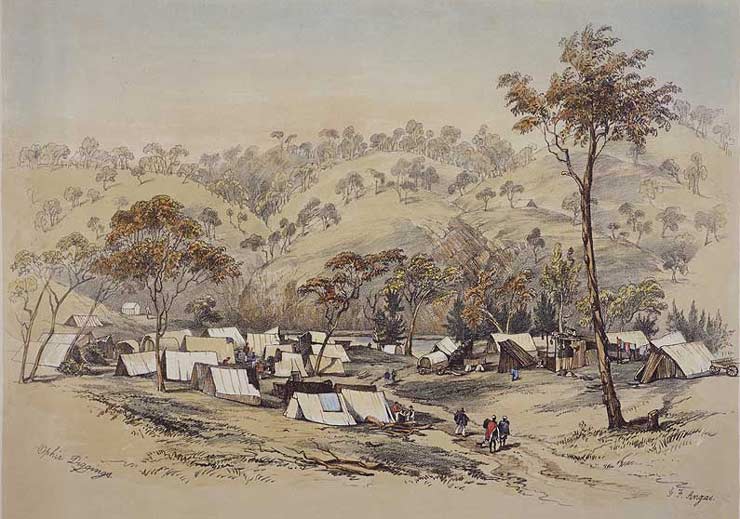 Ophir gold diggings in 1851 - asset 2
Ophir gold diggings in 1851 - asset 2
TLF ID R3040
This is a hand-coloured lithographic print showing the gold rush town of Ophir as it appeared soon after the first discovery of gold in 1851. About 30 canvas tents sprawl haphazardly near the river; miners are visible near the tents and several are walking along a dirt track; and rounded, sparsely treed hills are in the background. The print measures 34.3 cm x 33.9 cm and is Plate 2 in a publication by George French Angas entitled 'Six views of the gold field of Ophir'.
